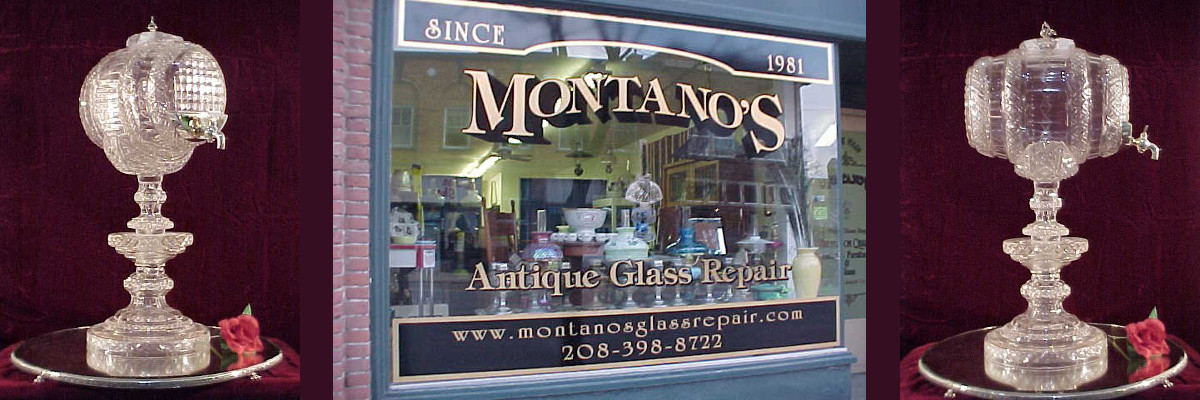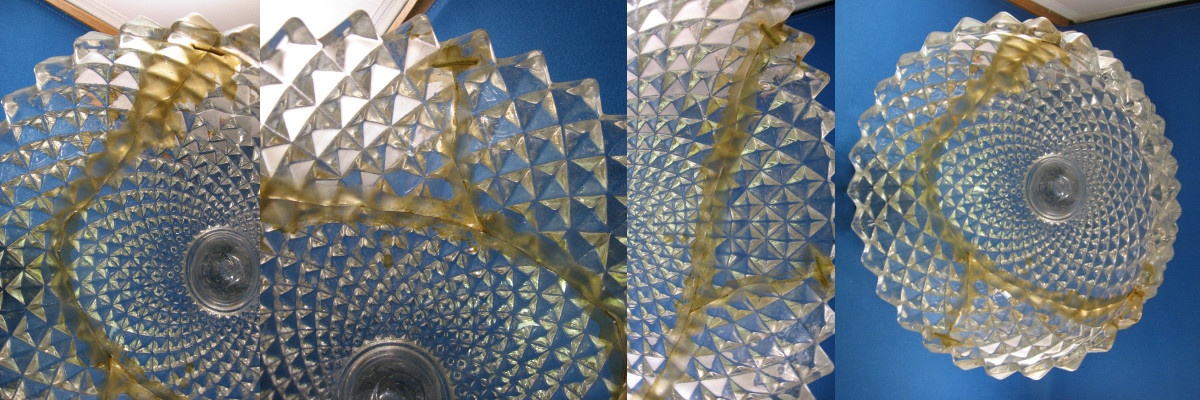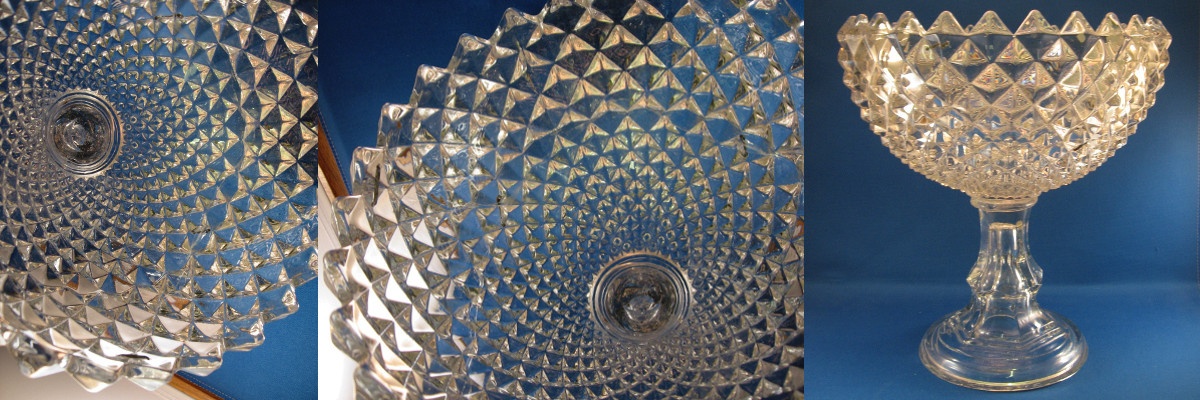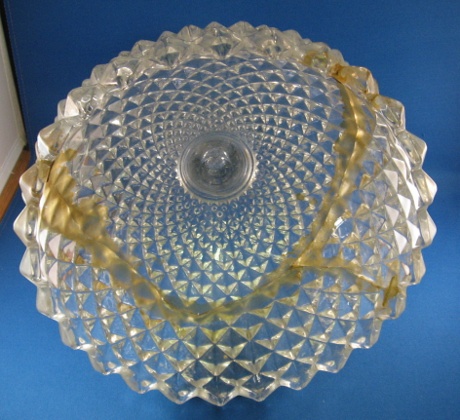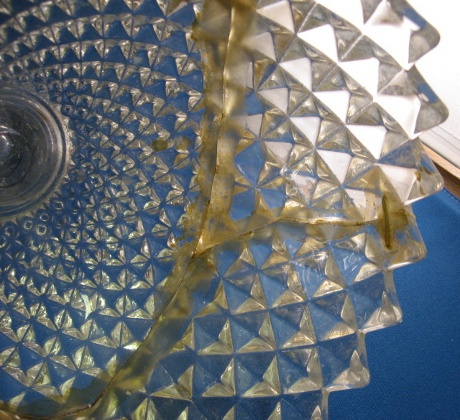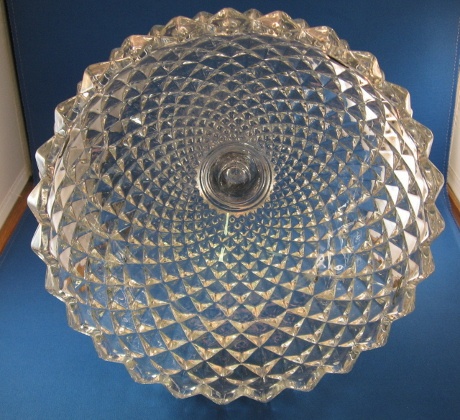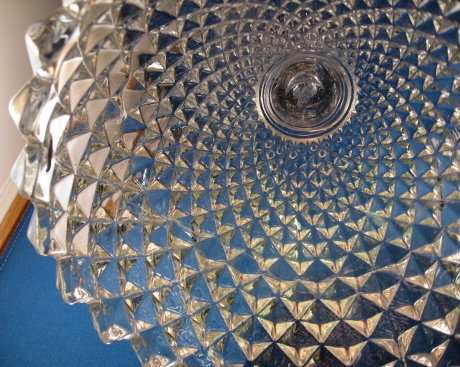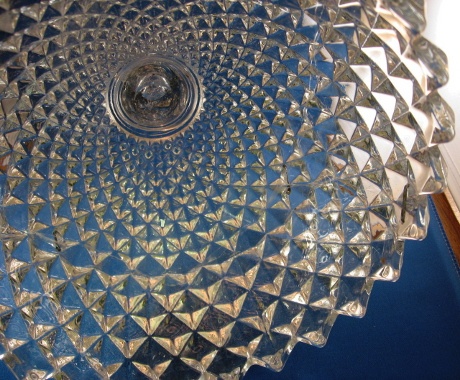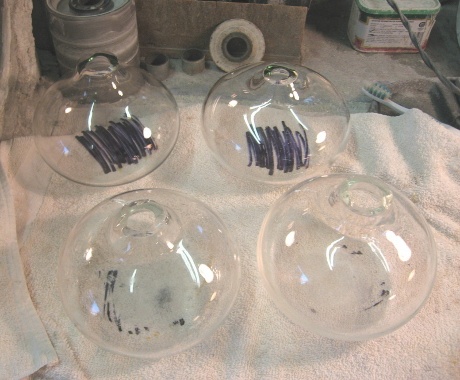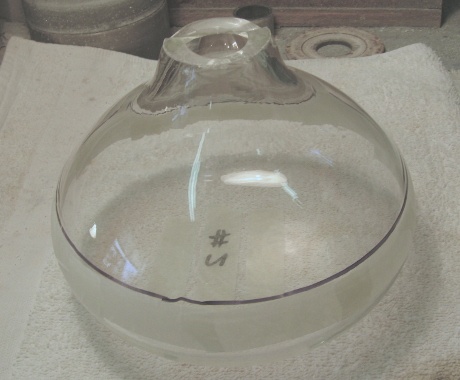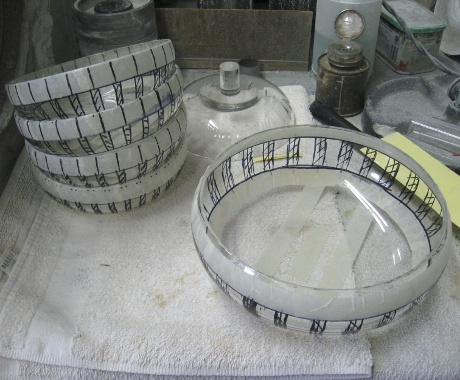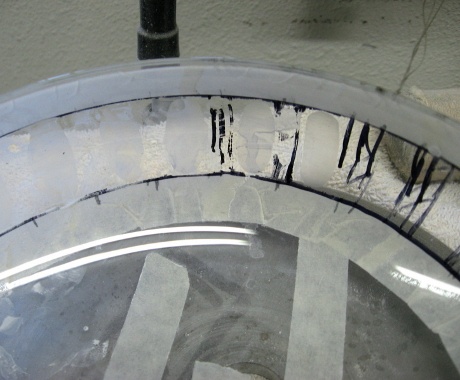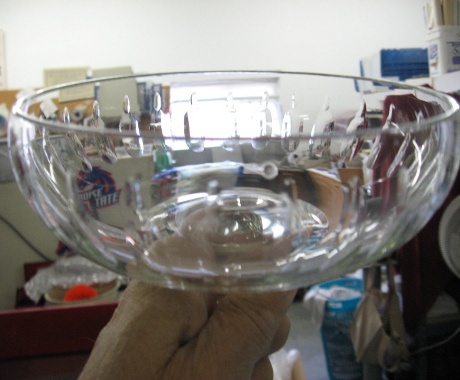These photos show a repair we received in the shop. It is a pressed glass compote made in the late 1880’s to early 1900’s. When the compote broke it was glued with mucilage. Mucilage glue is made from plants. Over the years the glue has yellowed. The glass sections were just not glued they were stapled with iron staples. Gluing with stapling would have been done in the early 1900’s to 1920’s.
The next group of photos shows the finished product. The compote was placed in a soak tank to dissolve the glue. When an item is glued with mucilage it can etch the glass underneath the glue line. This did occur. The etching was removed by polishing. The broken sections were mended with an acid bonding agent. In most cases we can hide 90% of the refraction line. After the mend was done iron staples were put in were the old ones had been. The staples did not have to be put back in, but it was felt that the staples added character to the compote. This was how craftsmen of the time did repairs. (To see the repair line look for the staples.)
We were contacted by a customer who needed four 6″ bowls and one 8″ bowl for a sterling silver epergne. All but one of the original bowls had been damaged due to a basketball. Our customer was unable to find any matching bowls that would fit the epergne. She needed to have them custom made. We contacted David McDermott of McDermott Studios who made the blanks for us. David worked for Pairpoint for many years. Now he has his own art glass studio with his wife. They are out of Sandwich, Massachusetts.
From the customer’s first inquiry to finished product was 4 months. Actual preparation, cutting and polishing was 5 hours per bowl.
